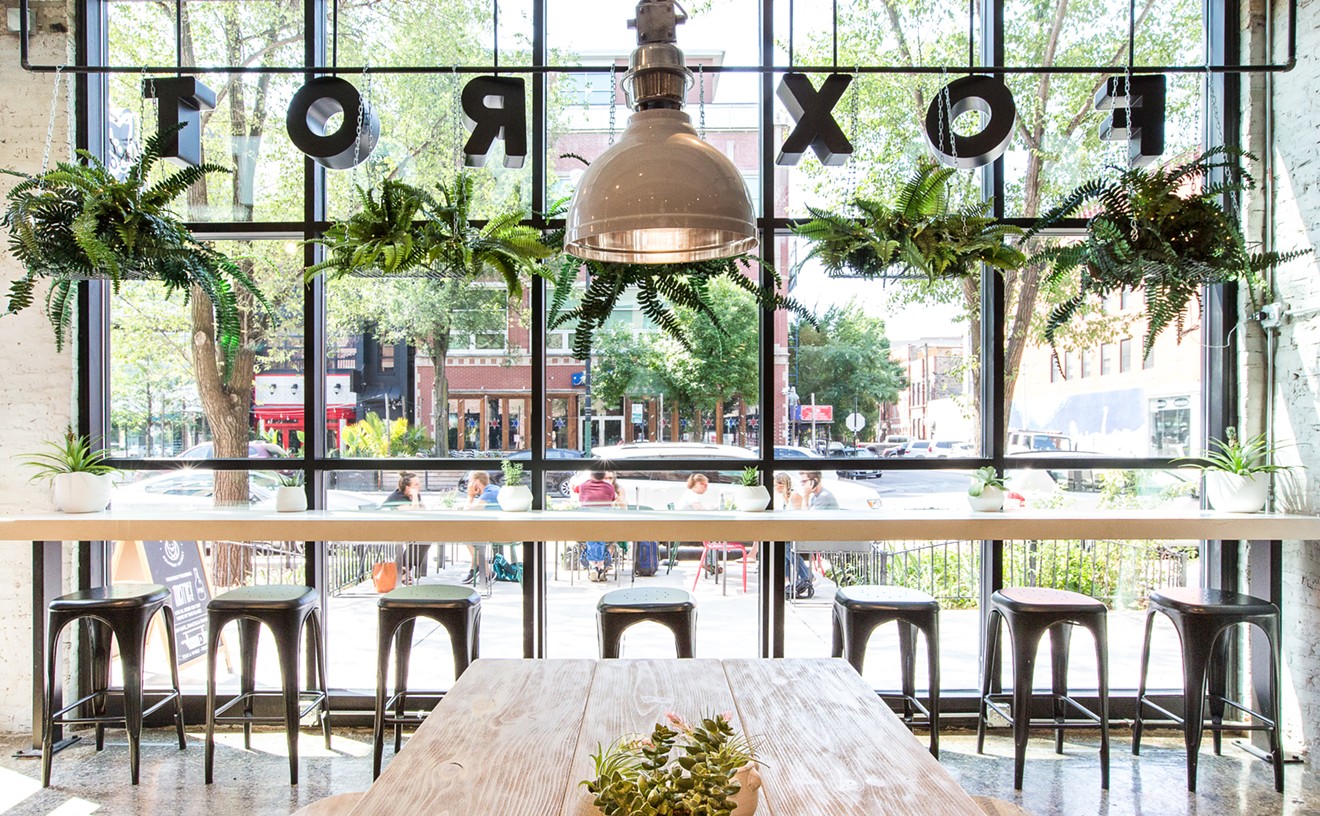Consider for a moment the evolution of sports bars. Once a neighborhood dive with peanut shells, disturbing stains, unknown dark corners, and a color television, the sports bar emerged from the 1980s as a renovated disco replete with dance floors and loud music--a different organism but unsatisfying. Over the next decade bar owners bought up sports memorabilia, hung cute names on neon shingles, and served up indistinguishable mounds of nachos and wings.
When people describe typical sports bars, it's this iteration that typically comes to mind, the neon- and junk-filled room built around the TV screen and the potato skin.
Well, brace yourselves: The sports bar is going upscale. According to restaurateurs and patrons, the best sports bars concentrate on one thing: food. "Everything should be centered around the food program," says Kevin von Ehrenfried, general manager of Humperdink's at Frankford and the Tollway. He defined the restaurant's fare--from traditional nachos to blackened snapper--as "simple elegance." Abraxas Baker, manager of Frankie's Sports Bar & Grill on McKinney Avenue, agrees. "The keys to a great sports bar are atmosphere and incredible food," he says. Frankie's is one of Dallas' newest sports bars and thus reflects the upscale trend: softer colors, more outside light, a glaring absence of autographed jerseys, and a menu featuring lobster pasta, lamb shank, sautéed artichoke hearts, and the ever-popular sun-dried tomato toast points.
Don't laugh at the menu and muted décor. The modern sports bar is a full-service bar and restaurant offering sports interaction. Celebrities such as Dallas Star Brett Hull and former NBA player Spud Webb drop into Frankie's on occasion, perhaps craving the toast points. And the subtler layout seems to work with less-celebrated patrons, as well. "I don't care about diversions like darts and games," says Mike Cantrell, self-proclaimed couch athlete and sports bar aficionado.
The current sports bar trend emerged from the muck of growth and competition. "When Humperdink's opened in 1976, there weren't TVs everywhere," von Ehrenfried says, acknowledging the dozen or so screens scattered around the place. Just about every restaurant of any kind offers ESPN on a screen somewhere, and sports bars must adapt in Darwinian fashion. Competition forces sports bars to find new ways to distinguish themselves (edible food, for instance). Dallas claims more restaurants per capita than New York, and the msn.com yellow pages lists close to 4,000 establishments just in Dallas and the areas immediately to the north and west. Add Rockwall, and the numbers might look truly frightening. "From an evolutionary standpoint they have to be upscale," Cantrell says. "There's so much competition, so many options."
Indeed, few patrons mention the typical accoutrements when describing the make-up of a perfect sports bar. They expect multiple screens, of course. Humperdink's invested well over $100,000 in monitors and sound systems for the Tollway location, including a programmable wall unit. Frankie's sank $16,000 into nine Sony flat-screen models. But patrons rarely comment on the number or size of the screens surrounding them. Instead, they concentrate on ergonomics ("It should have a lot of tables so every group can find a seat," says customer Christa Pittman), clientele ("A good sports bar attracts a lot of women," according to Brad Palmer), or even building codes ("It must have a good ventilation system," says Jody Larson). Cantrell likes a place that caters to men "to some degree" but welcomes women. Yet ultimately most patrons settle on the same key points--food and beer--as the soul of the modern sports bar. "You can have all the neat tricks and TVs, but without good food and beer, you won't keep people there."
Sports bar managers are catching on when it comes to upscale service. Baker claims that menu and overall layout work to attract more women, forgetting that proper ventilation also plays a significant role. And always, restaurants will go to great lengths to satisfy the odd behaviors and strange cravings of these fans. For example, Texas Bar and Grill in Las Colinas willingly imports a load of Rolling Rock beer to placate Penn State alumni and fans, while Fox and Hound in Dallas converts pool tables into, well, plain old tables in order to accommodate K-Staters.
Small-batch beer, mahi mahi fillet, subtle design, proper air circulation, women, and...oh, yeah, a few games on the TVs. That's what makes a sports bar in Dallas.
But plain old tables and TV sets for K-State alumni? Remember, Kansans don't buy that evolution crap.










